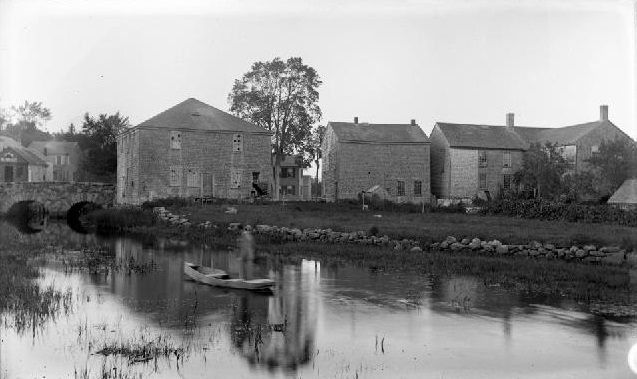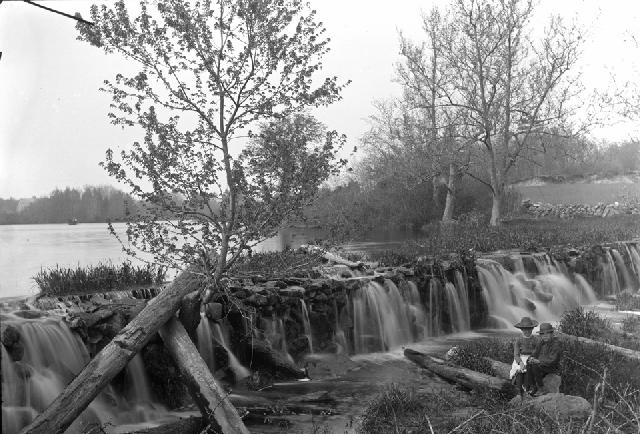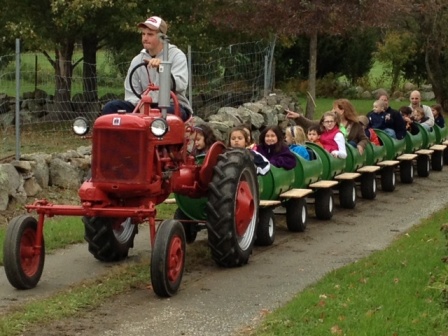In this series of articles, I hope to broaden the scope of historical focus that includes the Old Dartmouth Region. While these articles are hosted on New Bedford Guide, we do have accompanying sites of Fairhaven Guide, Dartmouth Guide, and a slew of others. It’s not material is running fry, because that will simply never happen, but that there are a multitude of members from the surrounding towns and cities.
It’s natural to be proud of your heritage, nation, ethnicity, state or city you claim origins from. We’d like for every member to be able to equally bask in that limelight. This author currently resides in Acushnet, so thought it fitting to choose Acushnet as the first surrounding town to focus upon. I am also a Community Supported Agriculture (CSA) shareholder and have had an interest on the history and background of the farm, in particular the old, massive barn that I drive by so often. So let’s take a trip through Acushnet’s history and see what we can uncover about The Silverbrook Farm. You can follow The Silverbrook Farm on Facebook here.
Cushena, Cushnea, Cushenagg, and 50 something other variants.
The Silverbrook Farm in Acushnet has a direct tie to the earliest settlers in the nation and region. The property is deeply steeped in rich local and national history. The first arrivals of English – Baptists, Quakers, and Puritans – needed to be fed and this demand was supplied by the scores of farms during Acushnet village’s founding years. Acushnet seemed almost from the beginning to be intentionally chosen to be the area designated as the agricultural spot to feed the local region in general, and eventually the growing city of New Bedford specifically as it began to progress at a quicker pace than its surrounding villages. The more history minded folks will recall that the region was originally called Dartmouth Plantation or well, just Dartmouth, and included the villages of New Bedford, Acushnet, Fairhaven, Westport and Dartmouth. I’ve even come across a few mentions that Tiverton and Little Compton were also encompassed by the term.
Acushnet was first dubbed Cushena, Cushnea, Cushenagg, and 50 something other variants. It was one of the first spots chosen to settle since the Mayflower arrived for one critical reason: the Acushnet river. Any pioneers looking to settle an area must first find a source of water out of simple necessity. Hygiene can’t be maintained, smithies can’t forge steel, crops can’t be nourished, life can’t be sustained period. It is no wonder that the oldest sites anywhere in the New World cropped up at the head of a river, along the river or where there was a pond, lake, brook, or spring.

The site where The Silverbrook Farm sits has a spring that still robustly issues water. That alone suggests that even though there are no records proving that what is now 934 North Main Street was one of the very first spots to be settled in the mid 17th century, it would have been considered prime real estate. The first structures in the area surely cropped up here.
Gosnold, Cushenas, and the Cushenagg “Naighbourhood.”
Indeed, Franklyn Howland mentions in his fount of knowledge ‘A History of the Town of Acushnet, Bristol County, State of Massachusetts’ that Bartholomew Gosnold’s crew likely passed through “Old Acushena” in one or both their visits in 1620 and 1621. The “Cushenas” were a small band of peoples within the Wampanoag tribe that lived on both sides of the Acushnet River in what is today, Fairhaven, Acushnet and New Bedford. The name of the area that the Cushenas lived in was called Cushenagg and the river called Acushenagg. In the day of the early colonists the territory was called Cushnet Country, Cushenagg Naighbourhood or Cushena Plantations.

By 1640 some of those off of the Mayflower were already making efforts to purchase strips of property within these territories from the local Amerindians. Governor William Bradford’s memorandum states some had purchased property: “…2 miles to ye Westerne side of ye said river to an other place called Acushente river which entereth at ye Westerne end of Macata…” Macata being the local word for West Island, Fairhaven. Of course, it wasn’t until November 29, 1652 that “Acushnet” was officially deeded and purchased from sachem Wesamequen and his son, Wamsutta for “…30 yards of cloth, 8 moose skins, 15 axes, 15 hoes, 15 pair of breeches, 8 blankets, 2 kettles, 1 cloak, 2 quid in Wampum, 8 pair of stockings, 8 pair of shoes, 1 iron pot and 10 shillings in another comoditie.” Quite a deal for 115,000 acres of land, wouldn’t you say?!
Immediately after this purchase settlers migrated to Acushnet from the Plymouth and Duxbury colonies. Only 5 of the original 36 people who purchased the territory were known to have specifically relocated to the Old Dartmouth region. Most only purchased the land to resell for a quick profit as soon as possible. Those five were Samuel Hickes, John Cooke, Samuel Cuthbert, William Palmer and a “Miss Jennings.” Of these five, only John Cooke is known to specifically come to Acushnet, most choosing Fairhaven Village as residences. However, in researching this article I may have come across a link between Miss Jennings and The Silverbrook Farm. More on her later. By 1694 more people began to choose Acushnet as home and 56 people were known to have brought their families to the region. The specific people were Arthur and John Hathaway, Samuel Jenney, Samuel Spooner, John Spooner Sr. and Jr., and Joseph Taber.
The “first comers” to Acushnet were puritanical and highly religious folk. To leave the relative safety of the Duxbury and Plymouth colonies and strike out with little security or guarantee of success into a wild, untamed land full of beast and likely hostile natives would require some pretty strong faith! Most of these earliest buildings no longer stand, not because they were of poor quality, or couldn’t stand the test of time, but because the first homes were simple log cabins. The first prospect to be undertaken in a new territory would be to find the aforementioned waterway and clear land. The byproduct of land clearing is obviously trees and stones. The trees were used to build the homes and as fuel, and the stones were used to build those mortar-less stones walls that are so common in the area and New England in general. For more info on this land clearing and the history on those stone walls read Those Old Stone Walls from our sister site Dartmouth Guide.
 New Bedford Guide Your Guide to New Bedford and South Coast, MA
New Bedford Guide Your Guide to New Bedford and South Coast, MA








